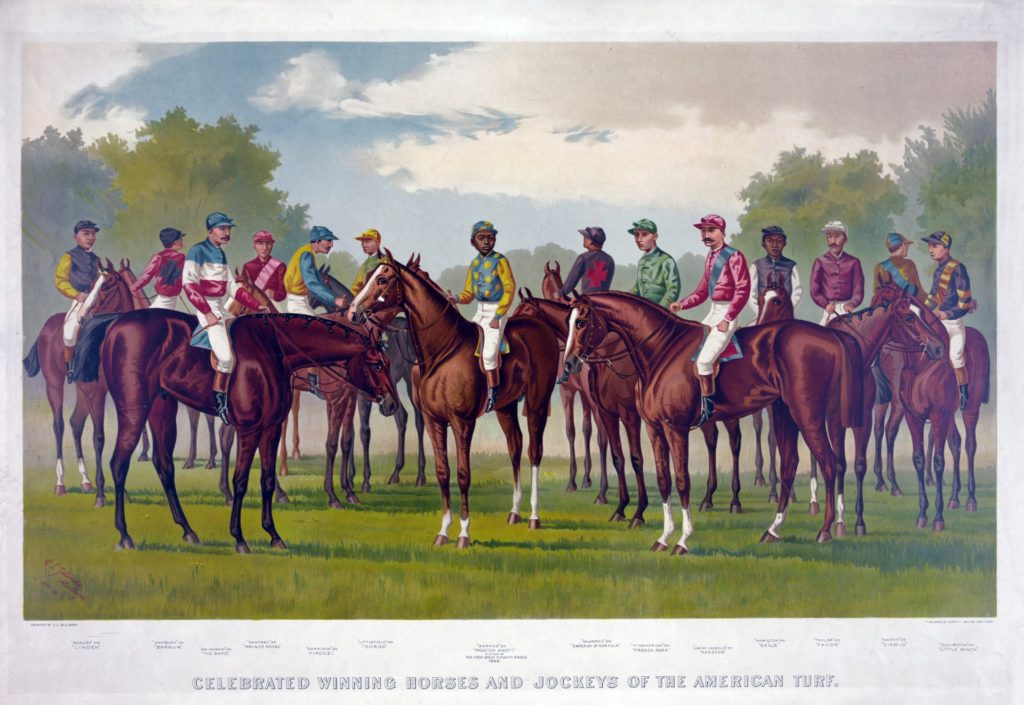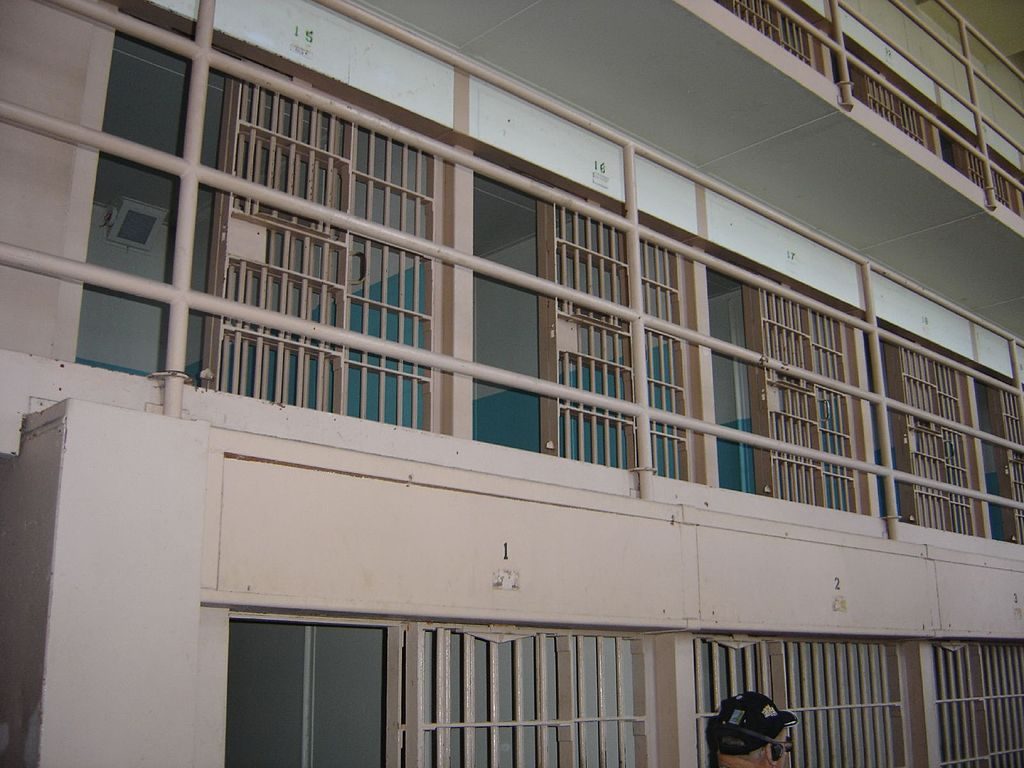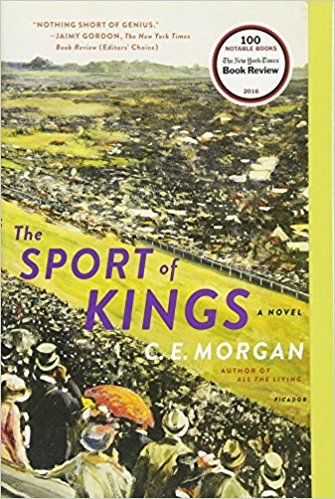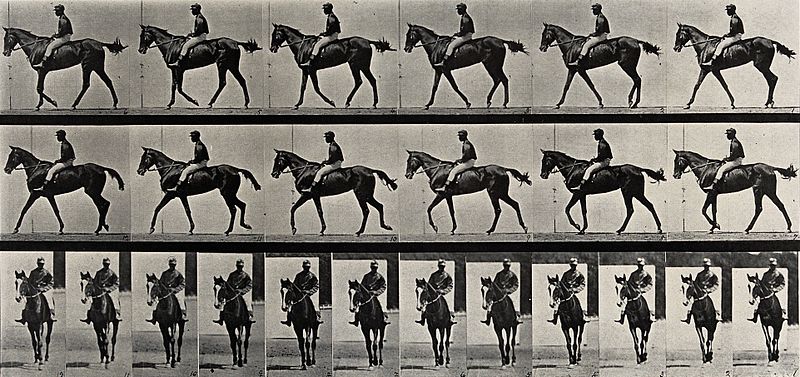Blood Money: C.E. Morgan’s ‘The Sport of Kings’
On May 17, 1875, under blue skies and wearing the flapping green-and-orange silks of his legendary employer J.P. McGrath, a diminutive, tough, whip-thin African-American jockey named Oliver Lewis, weighing little more than a hundred pounds, careened to the first Kentucky Derby victory on a chestnut Thoroughbred with a white blaze and two white socks named Aristides. Thirteen of the fifteen jockeys surrounding him as they thundered down the home stretch were also African-American. In fact, black jockeys would dominate the sport in the south for another thirty years, winning 15 of the first 28 Derbies.
Aristides’ trainer, Ansel Williamson, had been born a slave in rural Virginia. Purchased by a wealthy horse breeder, he learned the art and science of groomsmanship, and was eventually hired by J.P. McGrath, of the famed green-and-orange silks, who’d been born dirt-poor but, after winning $105,000 in a single night in a New York gambling house, started a Thoroughbred farm that went on to become one of the most famous of its time.
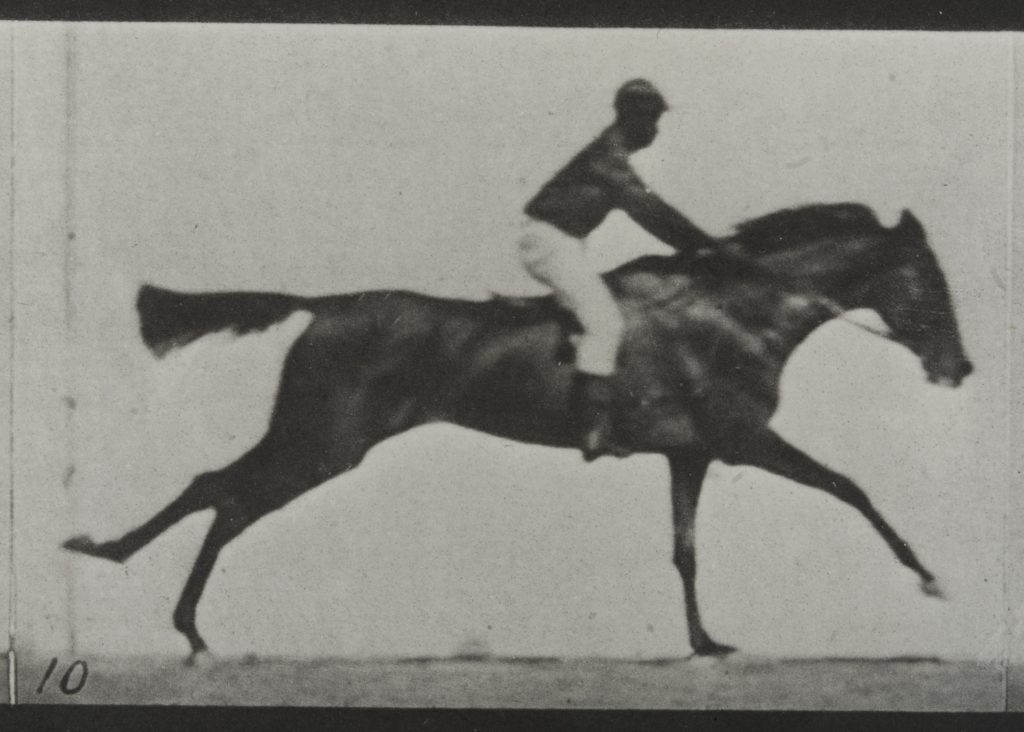
That a former-slave-turned-Hall-of-Famer trained Aristides–whose statue now stands at Churchill Downs–and an African-American jockey the size of a young girl rode the pounding horse to victory, hints at the intrigue, breathtaking chance, and monumental toil involved in the sport of horse racing. It also, for novelist C.E. Morgan—with her sharp comprehension of history and a penchant for literary gambles of her own–sparked the genesis of a brilliant, winding epic novel of a racially and economically fraught America: The Sport of Kings.
Spanning over 200 years as it moves back and forth through time, The Sport of Kings opens in the mid-1950s. Henry Forge, a restless, ambitious teenager schooled from birth in the racial politics of the south, sets in motion a shocking crime against his father’s black groom, Filip. The event is one of several sharp seismic blips in the bedrock inequity of Forge Run Farm, initially founded by Henry’s great-great-great-great-grandfather, Samuel Forge, who came on foot from Virginia to Paris, Kentucky in 1783, accompanied by one slave. On such an act of claim and hubris the farm was built; and, as author Morgan levels her steady eye at the parallels of human history, a nation.
Young Henry Forge turns the family’s tobacco farm into a Thoroughbred empire where the green grass is “the color of money.” His frustrated cosmopolitan wife, Judith, leaves him before too long and, in a deeply un-maternal move, also leaves their sole child, Henrietta, for him to raise. (One can’t help but wonder if Henry and his daughter, or at least their naming scheme, are a nod to legendary horse trainer Leo O’Brien and his daughter, Leona; or if, given Morgan’s divinity school background and this father-daughter pair’s ruthless streak, it’s more of a Herod/Herodias sort of thing.) Henrietta is bright, offbeat, and enthusiastic in youth, qualities that become warped into a strange, intellectual coldness by her father’s intense, even immoral, over-involvement in her life. When Henrietta blurts a racial slur at school and is penalized, her father, irate, decides to homeschool her on a strange curriculum of evolutionary biology, manifest destiny, and horsemanship.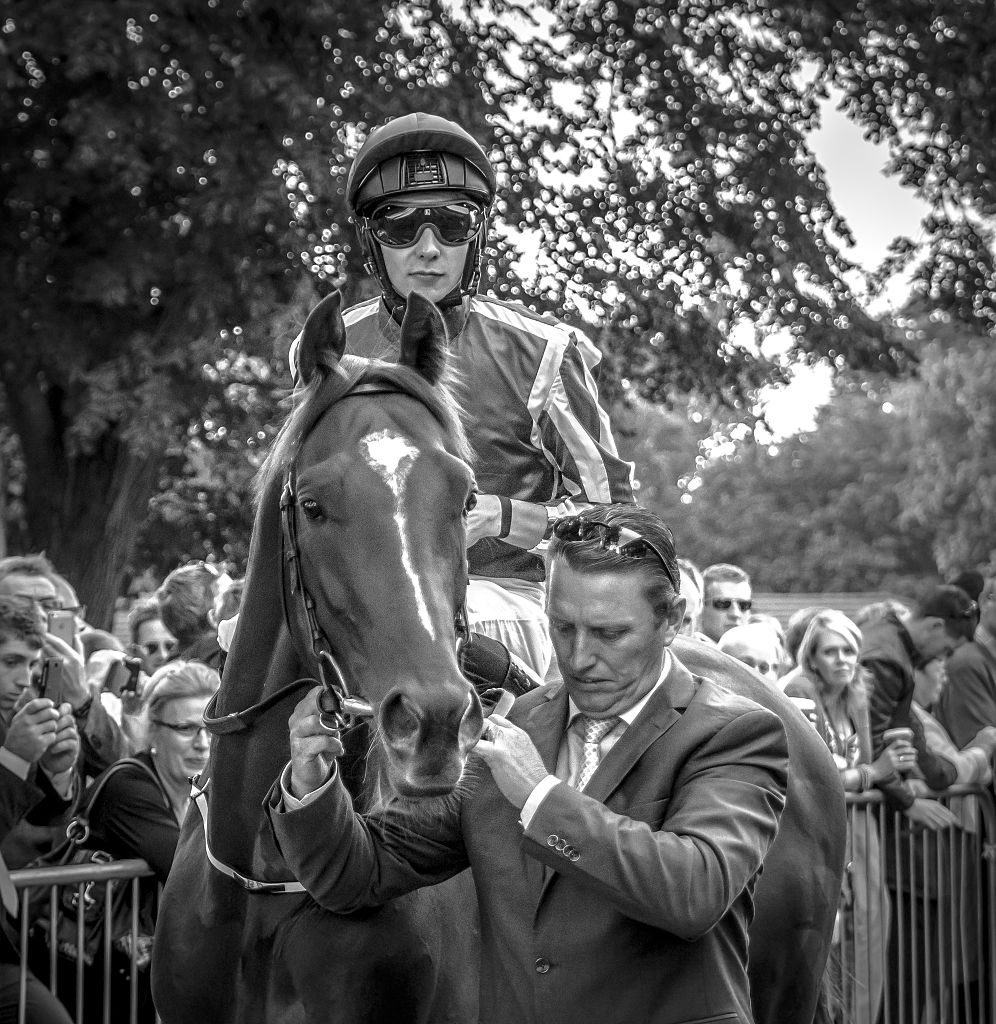
Henry Forge is, to put it mildly, obsessed with genetics. He’s especially intrigued by the strategy of linebreeding: the idea that doubling down on a certain lineage can perfect and purify it, yielding—if the circumstances are just right–the ideal specimen. (Even today, the odd, invisible world of dominance, alleles, and zygotes is a hallmark preoccupation of the sport, so much so that even the casual gambler can combine mares and stallions on fantasy web sites such as TrueNicks.com to produce virtual “nicks,” foals with an edge on wins. The site’s slogan could have come from Henry Forge himself: “Do more than just hope for the best.”)
The cloistered universe of Forge Run Farm is rendered in such careful and specific detail by Morgan that its sheer particularity could become claustrophobic–even her other characters realize how deeply weird the Forges are and try to get away from them, like the salt-of-the-earth veterinarian, Lou, who skitters to her truck to escape “these crazy people”—if it’s not for the sea change the author delivers halfway through the book, when Allmon Shaughnessy arrives on the farm.
Allmon is a 24-year-old fresh off a seven-year prison sentence, schooled in the Groom Program at Blackburn, and an undeniable talent with horses. He’s the only child of a wandering, handsome, alcoholic father, Mike Shaughnessy (“known in high school as that Irish fucking fuck”) and a caring but overburdened African-American mother, Marie. At fifteen, Allmon is noticed for his athletic promise and brought into a pre-NFL program, the Academy for Physical Education, where the coaches’ focus on phenotype is not so different from the horse breeders’ whom Allmon will encounter later (“‘How big was your dad?” “Six-two.” “Good….I want you big, fast, and I want you mean”).
But Marie’s chronic health problems, revealed to be lupus, are sinking the household. As with Erica Garner–the daughter of Eric Garner who was killed by police violence in 2014 for selling cigarettes without tax stamps, herself dead at 27 from a heart attack after childbirth–a legacy of racism and poverty live in Marie’s body, the “gendered necropolitics” of anti-Black, state-sanctioned violence, the sequelae. “Make me an animal,” Marie begs, in a heartbreaking prayer, “so I won’t know anything. Make me a man, so I won’t give a damn about anyone.”
Her son Allmon does give a damn, but he is orphaned too young to know what to do with his anger and his aching heart. He is led into crime by older boys on the street; tried as an adult for possession of narcotics, an illegal firearm and a stolen car, he is sentenced to seven years, some of which is described in horrifying detail as he learns to defend himself.
The introduction of Allmon to the farm—their first ever black groom, hired by Henrietta without the blessing or even knowledge of her father—will change the course of the Forge family forever. Most likely not in the way you, avid reader, are thinking, because Morgan will not give the reader what he or she expects. But—and there’s that wink at history again—change is coming, and change is, as Lyell and Darwin would agree, nature–and therefore man’s–most unstoppable force.
—
C.E. Morgan was born and raised in rural Kentucky. She attended Berea College, a tuition-free institution founded as an abolitionist school in 1855, and later, Harvard Divinity School. And like Allmon’s mother, Marie, she is no stranger to chronic pain, as indicated by this interview with Commonweal Magazine:
Anyone who lives with poor health or chronic pain, or who has endured poverty—real poverty—knows what it is to live with lack and a resulting fear so incessant that it becomes thoroughly normalized, invisible in its ubiquity. If you’re lucky enough to have that fear begin to ease, which it has for me only in the past year, it’s an odd experience. A stranglehold eases off your entire body.
An essay Morgan wrote for the Oxford American, “My Friend, Nothing is in Vain,” suggests that her own brand of chronic pain may, like Marie’s, be auto-immune in nature, like lupus.
But it’s important to keep in mind that a novelist need not have experienced firsthand that which they write into their work, and Morgan’s first preoccupation is with the way she renders her subjects. “Evil’s breeding ground is a lack of empathy,” she explains. “Evil acts reduce the other to an object, a being to its component parts, and obliterate subjectivity….So I locate moral beauty in an other-regarding ethic.”
She’s also concerned with the notion of “attunement”: “Humans struggle to remain attuned to one another—they want to turn away because of fear, or ambition, or boredom, or some lure of the ego. It’s difficult. It requires radical vulnerability, radical risk.”
Writing so boldly outside one’s historical period, race, and gender also puts the novelist in a position of “radical vulnerability,” and the whole thing can only work if it is a radical risk: the author wholly invested, putting her emotions and reputation on the line, tapping into voices that are not her own. It’s a gamble with a nearly paralyzing moral and ethical obligation, and that’s before you even get to the whole issue of “craft.” But if the stakes were not so high, how else could Morgan have propelled herself to create a character as stunning in thought, action, and voice as “The Reverend,” Allmon’s restless, glittering-eyed, charismatic preacher of a grandfather? (Morgan is excellent at writing convincing, multi-dimensional characters of faith, and their sermons; her first novel, All the Living, a quietly gorgeous, small-scope book taking place over only three months and focusing on just three characters, features pastor Bell Johnson, whose words read much like Morgan’s prescription for novel writing itself, her “other-regarding ethic”: “My heart was like a shirt wore wrong side out, brothers and sisters, that’s how it was when God turned me, so that my innermost heart was all exposed.”) But The Reverend is a different kind of preacher. An urgent, assertive, slightly wild and dogmatic man with an Old Testament streak, he has chosen a life of urban poverty and service. He harshly judges his own daughter, Marie, for her decisions, and is easier on his flock than his own family, much like John Ames’s grandfather in Gilead. He also speaks many of my favorite lines in the book:
“Y’all act like Jesus is dead! Well, let me ask you this: Is Jesus dead in the ground? ‘Cause I heard a rumor Jesus done rose up from the grave!”
A woman cried out, “He rose!”
“And how come he rose up out of that dark and nasty grave?”
“Tell me!”
“How come he said, ‘Eat my body and remember me?’….Because my Jesus, my Jesus is the original Negro, and he said, only I can pay the bill…”
…Now the Reverend stopped suddenly, plucked a pink handkerchief out of his suit pocket, and mopped his streaming face, and when he spoke again his voice was conversational: “Now eventually somebody’s gonna tell you Jesus ain’t had no brown skin. And you know what you’re gonna say when they tell you that? You’re gonna say: If Jesus wasn’t born no Negro, he died a Negro. What part the cross you don’t understand?”
—
The Sport of Kings is by no means a “perfect” book: its arc treads a little too close to Philipp Meyer’s The Son to feel wholly new, and at one key section, delving back into the early days of slavery on Forge Run Farm, the novel takes a sudden dive so immoderately Faulknerian—all dark and lushly incestuous and overwrought–that it threatens, like kudzu, to choke up the whole book.
But The Sport of Kings possesses a certain perfection of spirit, a reckless authorial gamble. Something special happens when a novelist combines that gamble with a terrific intellect and a heart for human suffering. We end up with a book that’s one in a million, a Secretariat, a Hellsmouth, pounding for the finish.
—
And what of those African-American jockeys who dominated the sport of horse racing in its early decades? The athletes like Isaac Burns Murphy, whose 44% win rate has never been surpassed, and whose earnings would have made him a millionaire if he lived today; or Jimmy Winkfield, who won 220 races in 1901 alone, every one of them a threat to life and limb?
Sadly, Jim Crow racism, and sometimes direct sabotage, thinned their ranks. The Irish jockeys of the northern states were not, on the whole, kind. Isaac Burns Murphy was once discovered, apparently drunk, on the back of a horse prior to a race; it was later proven he’d been drugged by an opponent. Winkfield escaped segregation in the United States with a successful second career in Russia, winning the Russian Oaks five times and the Russian Derby four; but when he was invited back to the States for a Sports Illustrated gala in 1961, he was told he could not enter through the front door.
No African-American jockey has won the Kentucky Derby since 1902, though Winkfield placed second the following year.
The sport is now dominated by riders from Latin American countries, immigrants from Venezuela, Mexico, Panama, rural gauchos of small stature and true grit. (Leona O’Brien, that daughter of famous horse trainer Leo O’Brien, whom I mentioned earlier? She went on to marry her father’s jockey, the Puerto Rican-born John Velazquez, now the highest-paid in his sport; they have two children). Morgan gives these newer jockeys a brief nod in The Sport of Kings, and a reader can’t help but think that fifty years from now, there will be a novel in their story, too.
